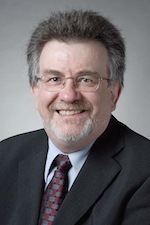Despite flat spending, UW-Madison inches up in research rankings
Despite flat research expenditures nationwide, the UW–Madison research enterprise grew by a tad more than 5 percent in 2012 and inched up to number three in the rankings among all U.S. universities, according to statistics released by the National Science Foundation (NSF).
UW-Madison now ranks just behind Johns Hopkins University and the University of Michigan for sheer volume of research. In fiscal year 2012, research expenditures at UW–Madison neared the $1.2 billion mark, showing growth of 5.2 percent over fiscal year 2011, when UW–Madison spent $1.1 billion and weighed in at number four nationally.

Martin Cadwallader
While the new statistics show UW–Madison performing well, university officials cautioned that future reports may reflect reduced growth in federal expenditures for research, an increasingly competitive environment for grants, and the effects of sequestration and the government shutdown of 2013.
Already, federal awards to UW–Madison researchers — a leading indicator of future research spending — have declined by 10 percent since the end of fiscal 2012. In anticipation of a decline in research expenditures due to budget cuts and sequestration, the university has set aside bridge funds for research projects and centers affected by the across-the-board cuts to current research. By helping to offset declines from sequestration, the university hopes to position itself for the new funding environment and maintain its competitiveness.
For 2012, NSF surveyed 907 academic institutions, tracking spending from both private and public sources as a measure of research activity. Research expenditures are a widely used measure of research volume using the amount of money an institution spends on science, engineering and other scholarly activities as a gauge. UW–Madison has consistently ranked in the top five of all American universities, public and private, for research volume for more than two decades.
“Credit Wisconsin faculty, staff and students, and their hard work and creativity, for our continued success.”
Martin Cadwallader
“The numbers continue to look good,” says UW–Madison Vice Chancellor for Research Martin Cadwallader. “We are doing well in spite of slowed growth and perturbations such as the government shutdown and sequestration. Credit Wisconsin faculty, staff and students, and their hard work and creativity, for our continued success.”
Nationally, research spending in 2012 totaled $65.8 billion, a decline of 1.1 percent.
The vast majority of research dollars are secured through competitive grants for specified projects.
The new NSF figures reflect expenditures in all scholarly areas, including science, engineering, business, the social sciences, education, and the arts and humanities.
Research funding comes mostly from competitive grant awards from federal agencies, including the National Institutes of Health, the National Science Foundation, the Department of Energy, NASA, the National Oceanic and Atmospheric Administration, and others. In addition, private sources of funding, gifts and grants, make up the research expenditure totals.
Tags: federal relations, rankings, research




